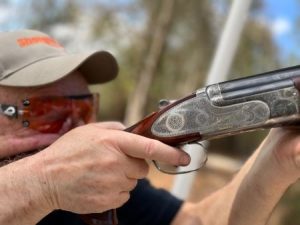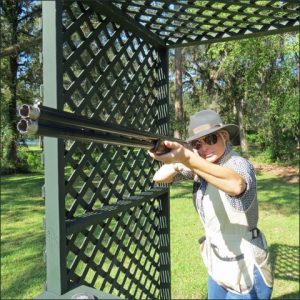The Causes of Shotgun Flinching
The Startling Phenomenon of Shotgun Flinching
Shotgun flinching, a phenomenon that affects many shooters, is a perplexing and frustrating occurrence. Whether it’s a seasoned hunter or a novice shooter, the anticipation of recoil often causes an involuntary jerking motion, resulting in missed shots and diminished accuracy. Understanding the underlying causes of shotgun flinching is crucial in overcoming this obstacle and improving shooting skills. In this article, we will delve into the mysteries surrounding this phenomenon and explore the factors that contribute to shotgun flinching.

Unraveling the Mystery: The Culprits Behind Shotgun Flinching
The human mind is a complex system, and when it comes to shooting a shotgun, it can sometimes work against us. One of the primary culprits behind shotgun flinching is recoil anxiety. The anticipation of a powerful kickback can create a psychological response, causing the shooter’s body to involuntarily tense up and pull the trigger prematurely. This fear of recoil is often developed through past experiences or even hearsay from others, leading shooters to develop an instinctual response to anticipate and avoid discomfort.

Another factor that contributes to shotgun flinching is overthinking technique. Shooting a shotgun requires a delicate balance of focus and relaxation. However, when shooters become overly conscious of their technique, they may inadvertently tense their muscles or alter their grip, resulting in a jerky and inaccurate shot. It’s essential to find the right balance between being mindful of proper form and allowing for natural fluidity of movement.
Breaking Down the Causes: From Recoil Anxiety to Poor Technique
One of the lesser-known causes of shotgun flinching is the physical discomfort caused by improper shotgun fit. If the shotgun is not properly fitted to the shooter’s body, it can result in an uncomfortable shooting experience. A poorly fitting shotgun may cause excessive recoil, making the shooter more prone to flinch in anticipation of the discomfort. Ensuring that the shotgun is properly fitted to the shooter’s body can significantly reduce the occurrence of flinching.
Furthermore, poor technique can also contribute to shotgun flinching. Failing to follow proper shooting fundamentals, such as maintaining a relaxed grip and allowing the recoil to follow through the shot, can result in jerky movements and a loss of accuracy. It is crucial for shooters to receive proper instruction and practice regularly to develop the muscle memory necessary to maintain a steady and controlled shot.
Conquering Shotgun Flinching
Shotgun flinching can be a frustrating obstacle to overcome, but with the right approach, it can be conquered. By understanding the psychological and physical factors that contribute to shotgun flinching, shooters can work towards improving their technique and developing a more relaxed shooting experience. Seeking guidance from experienced shooters or professional instructors can provide valuable insights and help develop strategies to overcome flinching. With perseverance and practice, shooters can regain their confidence and accuracy, ultimately enhancing their overall shooting skills.


Comments